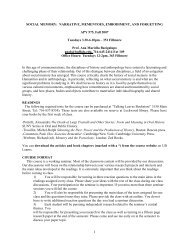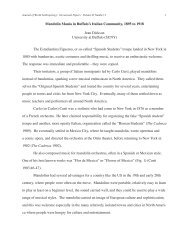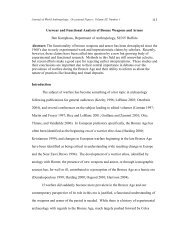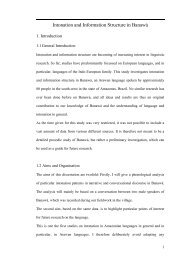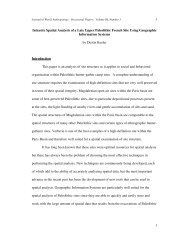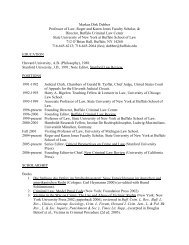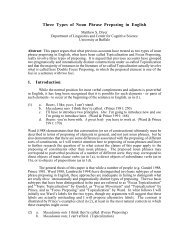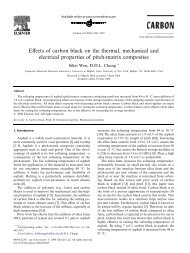Electrophysiological Evidence for Sentence Comprehension - Wings
Electrophysiological Evidence for Sentence Comprehension - Wings
Electrophysiological Evidence for Sentence Comprehension - Wings
Create successful ePaper yourself
Turn your PDF publications into a flip-book with our unique Google optimized e-Paper software.
5.3.3.. The results in the light of language processing models<br />
The results of the ‘case’ and ‘gender’ experiments correspond to numerous ERP<br />
experiments in which both LAN and P600 components were obtained in some sort of<br />
grammatical violation paradigm. While P600 is usually related to either integration<br />
processes (especially if the target word is in the sentence final position) or repair and<br />
reanalysis (particularly in serial processing models), there is no general agreement in the<br />
functional analyses of LAN since it can be obtained in a number of experiments in which<br />
some aspect of morphosyntax is violated. The results obtained in ‘case’ and ‘gender’<br />
experiment fit into the model proposed by Bornkessel & Schlesewsky (in press), a model<br />
that is of interest here because it uses some notions of RRG. In their model LAN is<br />
functionally related to establishing agreement and linking (macrorole mismatch). While<br />
the model is predominantly serial (three phases, with parallel processes within each<br />
phase), it is sensitive to the recent findings which weaken the opposition between syntax<br />
related and semantics related components in electrophysiological research in sentence<br />
comprehension (Kuperberg et al., 2006, Kim & Osterhout, 2005) especially when<br />
grammatical categories interfere with thematic relations (in Kim & Osterhout experiment<br />
thematic roles were inversed as in ‘at breakfast the eggs would eat…’ where<br />
(morpho)syntax and semantics are interwoven). There<strong>for</strong>e, Dative where Accusative is<br />
expected might be interpreted as thematic role violation (non-macrorole instead of<br />
macrorole) with LAN as an electrophysiological signature obtained in similar<br />
experiments <strong>for</strong> e.g. Dutch and German. The same components, LAN and P600 obtained<br />
in ‘gender’ experiment can be interpreted as agreement error; again, in accordance with<br />
eADM model. At the same time it should be noted that all results that make the<br />
150





